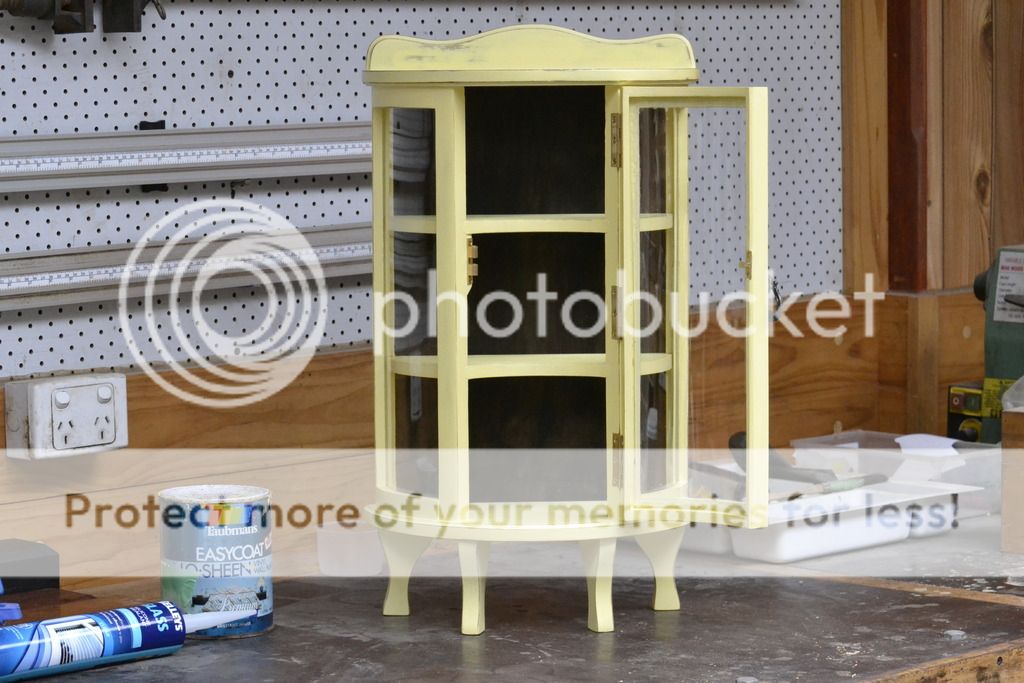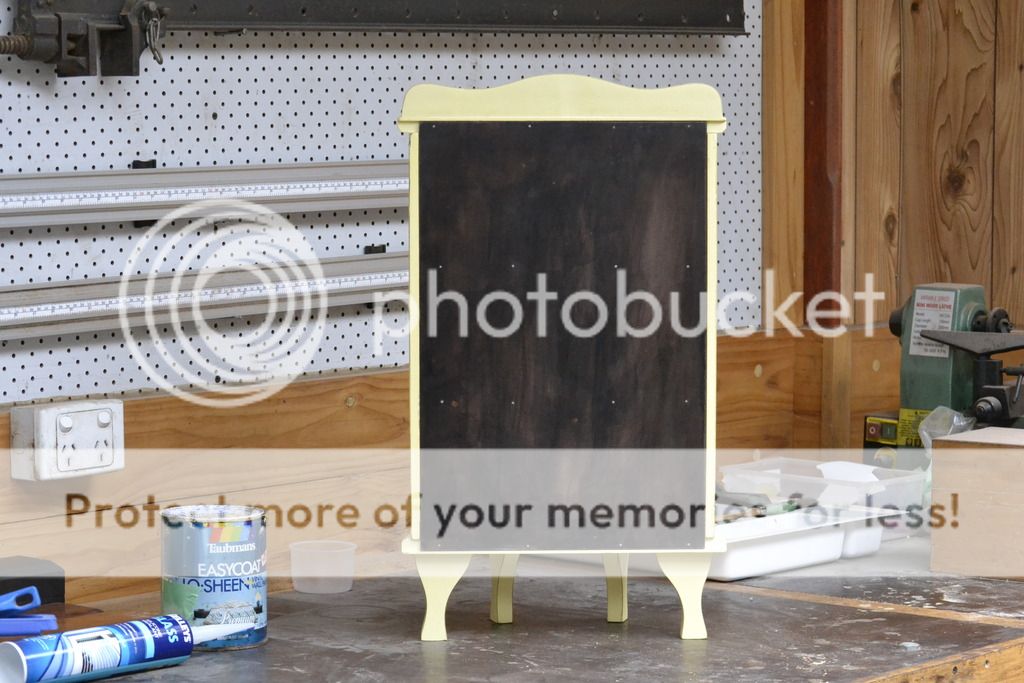swagman
Established Member
I purchased the following box of bits at an Auction House around 10yrs ago. It an ornamental display case, possible built sometime during the 1940s early 1950s. 2 out of the 3 curved wooden panels are broken or cracked, most of the glued joints had either opened up or completely failed, and the backing board and hardware were missing. The only real attraction at the time was the 3 curved glass panels that were in good condition.

Each frame was pulled apart, and re-glued using a stronger modern glue.

Sections of the frames that were missing were replaced with new.

The upper and lower rails were dressed back to 90 degrees using a shooting board.

The 3 curved panels were then pinned together to allow the 180 degree circumference to be easily measured.


Determining the radius from the circumference measurement.
(2 X 492 = 984mm)
Radius = 156mm. http://www.rkm.com.au/CALCULATORS/CALCU ... phere.html
The bevel on each stile was then dressed back to conform within the given radius.



Ready for the 3 curved glass panes to be installed.

Project completed.




Each frame was pulled apart, and re-glued using a stronger modern glue.

Sections of the frames that were missing were replaced with new.

The upper and lower rails were dressed back to 90 degrees using a shooting board.

The 3 curved panels were then pinned together to allow the 180 degree circumference to be easily measured.


Determining the radius from the circumference measurement.
(2 X 492 = 984mm)
Radius = 156mm. http://www.rkm.com.au/CALCULATORS/CALCU ... phere.html
The bevel on each stile was then dressed back to conform within the given radius.



Ready for the 3 curved glass panes to be installed.

Project completed.




































